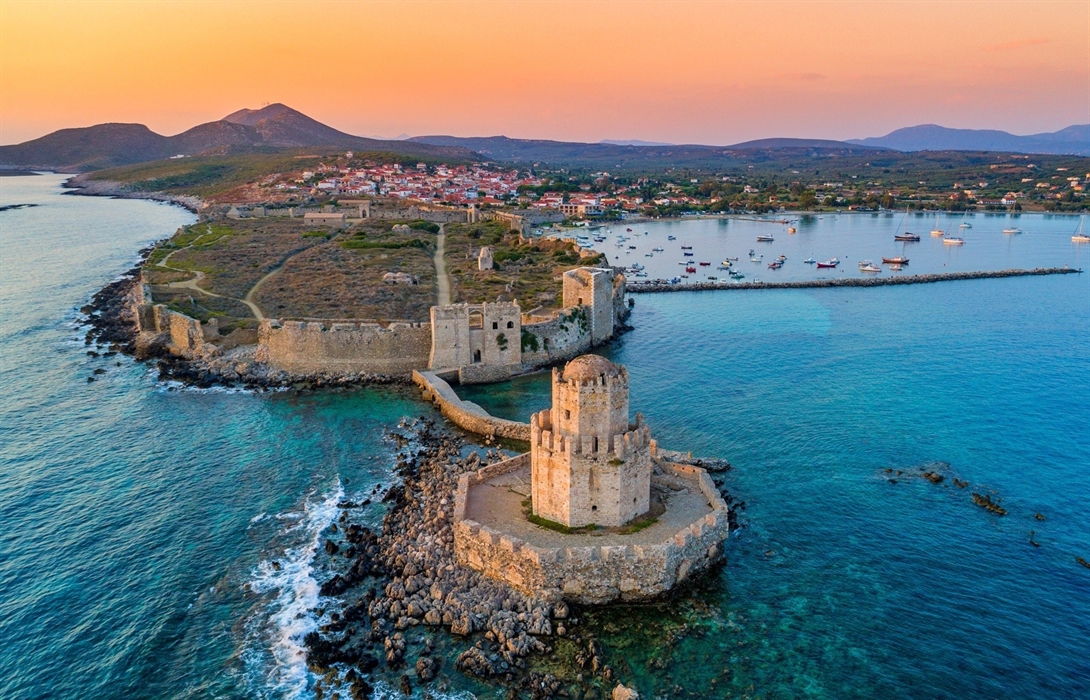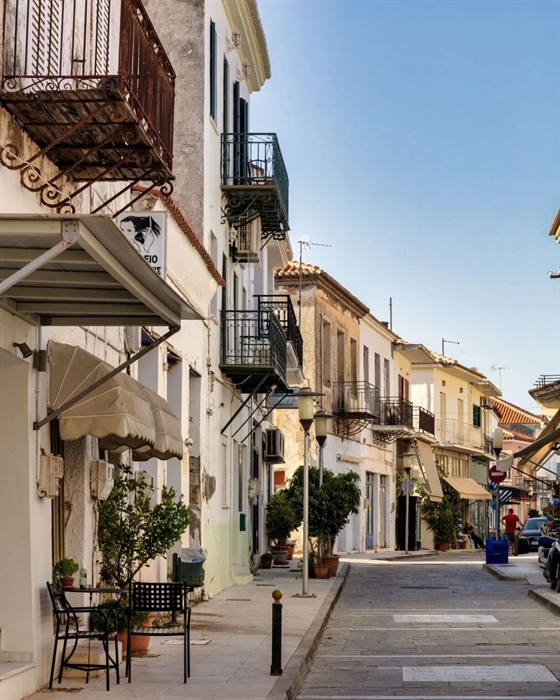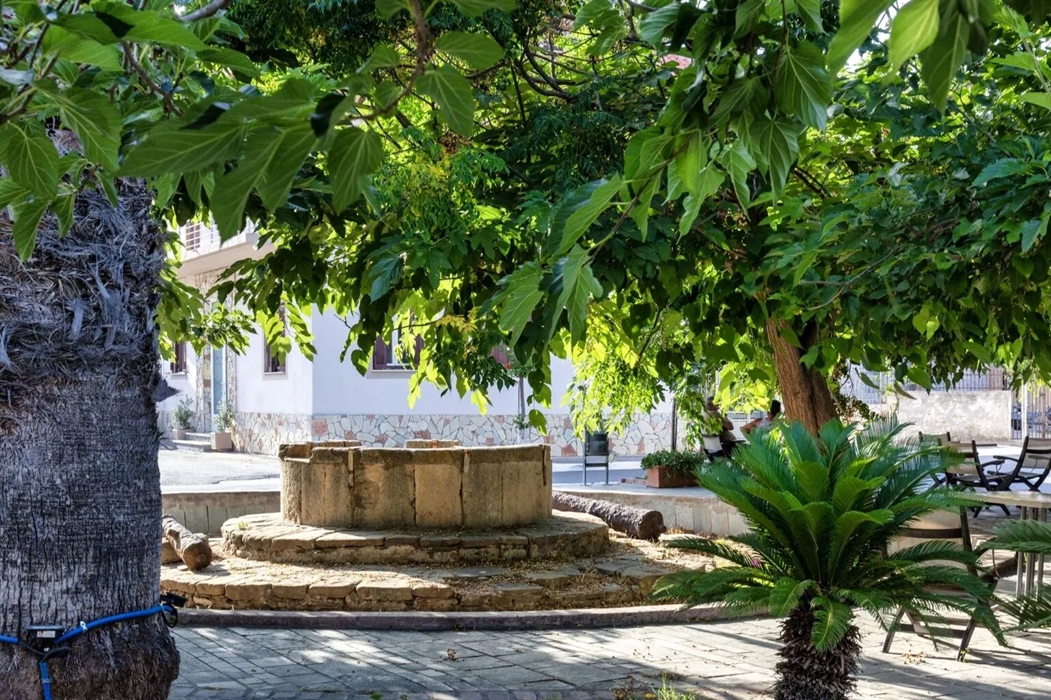The well-preserved settlement of Methoni has an organised sandy beach, with a view of the famous castle, shops, restaurants, café-bars, accommodation establishments, etc. It is a nice place for family vacation.
The well-preserved settlement of Methoni has an organised sandy beach, with a view of the famous castle, shops, restaurants, café-bars, accommodation establishments, etc. It is a nice place for family vacation.
The current town was built outside the castle after 1928 by the French which were led by General Maizon. Roofs made of clay tiles and antefixes are prevailing elements of its well-preserved buildings. They are usually two-storey, with simple facades, and terraces with the distinct elaborate railings.
There are small shady squares and a main commercial street, Episkopou Grigoriou street, where there are shops and tavernas.
At Syngrou square lies the elementary school with the neoclassical elements, built with money donated by the famous benefactor in 1901. There lies one of the 4 Venetian wells of Methoni. They have been declared landmarks, and were built durind the Second Venetian Occupation (1686-1715).
Distinct is also the square of the old Kapodistrian school, one of the first mutual learning school in the Peloponnese. It operated for 108 years and then closed. In 1951, it was declared a landmark and it was restored in 2015.
On the settlement’s beach there are beach bars, restaurants and cafés.
Read about the history of the castle-city of Methoni in the section about the castle.
The catacombs of Saint Onoufrios
It is a rare example of an Early Christian cemetery, and it has similarities with the catacombs in Melos. It was probably built in the 4th century, and was in used up to the 6th century. In the 12th-13th century, the space served as a hermitage and was decorated with wall paintings. This Early Christian cemetery is carved in the rock, consisting of six rooms, encircling arcosolia and pit tombs. In the Late Byzantine era, the cemetery was converted into a hermitage. You will discover the catacombs, by taking a turn at the second kilometre of the road of Methoni-Pylos, leading to Agios Athanasios, and then by walking. (Source: odysseus.culture.gr).
Find the destination on the interactive map below. Open on Google Map.
Σχετικό περιεχόμενο χρηστών (UGC)
Ενημερωθείτε για ενδιαφέροντα θέματα γύρω από τον προορισμό μέσα από το περιεχόμενο των χρηστών μας
Newsletters
- About Us
- FAQ's
- Map
- Tourism Information Centers
- Disclaimer
- Sitemap
- Our Brand
- Media Room
- Add your Business
- Corporate
- MICE

Peloponnese. The land of impossible beginnings





Design and creation from Cosmote
Marinas and Moorings
Diving Centers
Get Inspired
- Media Gallery
- Peloponnese Travel Blog
- The Peloponnese in the Media
- Your Feedback
- Users' General Content
- Users' Local Products
- Users' Events Content
- Ask a Local
More
- My peloponnese vibe
- Our providers Network
- Destinations Map
- Weather
- Public Transport
- Frequently Asked Questions
- Useful Phones
- B2B
- Destination Statistical Data
- Contact





